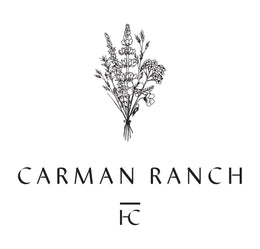Why Carman Ranch Beef is Exceptional
We hold ourselves to high standards during the two and one-half years it takes to bring Carman Ranch beef to your table. You can taste the close attention we pay to our cattle and the land in our beef, which has a complex, earthy flavor. We’re often asked how we raise our cattle and what makes our beef special. These are the practices we believe make the greatest difference and results in high-quality, wholesome Carman Ranch beef.
Knowledge: It’s What You Know
The knowledge we gain from daily, hands-on farming is one of the most important and pleasurable aspects of the work we do. At Carman Ranch, we understand that how we care for our animals and the land makes the biggest difference in creating a product that is healthy, sustainable and delicious.
Place: It All Begins With Place
Our land is several parcels of rolling prairie, timbered rangeland and irrigated valley ground. Grazing season begins and ends in the prairie. The mother cows make summer homes in the shaded forest ground while the fertile meadows provide an ideal finishing ground for younger animals.
The cows come home in December or January, when the snow covers the ground. Once back, they settle in and prepare to birth their calves, dining on hay that was harvested from the fields in late fall. After they are born, the calves grow and spend another spring on the range with the rest of the herd. Then, they graze for another summer and fall on the ranch.
During these two growing seasons, we take special care to guarantee that the beef from these animals will be outstanding. We move the cattle to fresh pasture often, opening a gate to watch them run and buck as they arrive at new grasses. Constant movement and careful attention to the rate of growth of the animals and grasses serve them both well. The steers select the forages they need to grow and gain weight, developing a combination of internal fat and fat covering that ensures the best quality meat. And the grasses get clipped, stomped down and fertilized with manure, resulting in fields that are vibrant, retain water, are drought resistant and are highly productive without the addition of fertilizer.
Genetics: Breed Matters
For generations, we have raised registered Hereford and Angus cattle. Both breeds are uniquely adept at thriving in challenging mountain conditions while producing beef of the highest quality.
Currently, our herd is made up of 150 registered cows ranging from two to 17 years old. The heifers we select to join our cow herd are hardy and have good mothering skills and great dispositions. Their personalities are as unique as their faces, and getting to know each one is one of the most rewarding parts of raising cattle.
Our great-grandfather, Fritz Weinhard, brought the first Hereford herd to the ranch in 1935. (His favorite was named Prudence). To this day, the mother cows on Carman Ranch are direct decedents of those early Herefords.
In 1987, Garth Carman, Fritz’s grandson and Cory’s father, bought a herd of Angus cows from Gartner Denowh Ranch in Montana. The daughters of those cows make up our Angus herd. We breed these cows with bulls known for their small frame size, calm demeanor and marbling characteristics that produce excellent beef.
We give our calves the best possible lives. They stay with their mothers from spring until late fall. Then, we bring them home to feed in the lush valley while the mother cows return to the hills. Back home, we keep the calves in a large group that we watch carefully, moving them to fresh pasture regularly until the first snow falls. Over winter, they receive a diet of high-quality homegrown hay and alfalfa.
Harvesting: Part of Our Promise
At the end of fall, we handpick the 18 month-old animals that are ready to be harvested. We believe that it is our responsibility to provide each of our animals with a contented life and a painless, stress-free death. A trusted and highly skilled artisan arrives at the ranch in his mobile slaughter truck. Quickly and humanely, he harvests the animals in the same fields where they were born and lived out their lives.
Processing: Your Animal to Your Specifications
After harvesting, the animals—now sides of beef—travel all of three miles east to Valley Meat Services, a small custom-exempt plant owned by Kevin Silvieria, one of our most important partners. Kevin takes great pride in his work and reinforces our commitment to quality by collaborating with Carman Ranch year after year to provide our customers the best assortment of cuts for their freezer.
Valley Meat Services is inspected and regulated by the state of Oregon. Kevin is licensed to process meat from owners of animals who seek his services. This is the reason we sell our animals before they are harvested and assign you, the customer, a quarter, half or whole animal before it arrives in Kevin’s shop.
Dry Aging: Old-Fashioned Flavor
Dry aging is an old-fashioned process used most often on beef sold at high-end grocery stores and featured on restaurant menus. Dry aging improves the meat’s tenderness by allowing the muscle fibers to relax and stretch while certain naturally occurring enzymes break them down. It also causes the meat to lose moisture through evaporation, which intensifies the flavors and improves the texture. Properly aged beef freezes perfectly, does not lose additional moisture when defrosted and cooks beautifully. We assure you an eating experience that is supremely flavorful, perfectly tender and uniquely satisfying.
